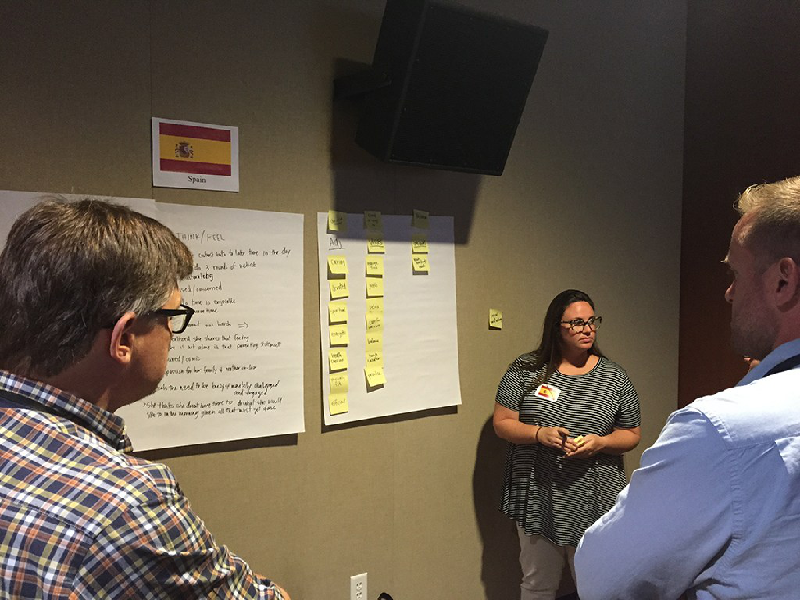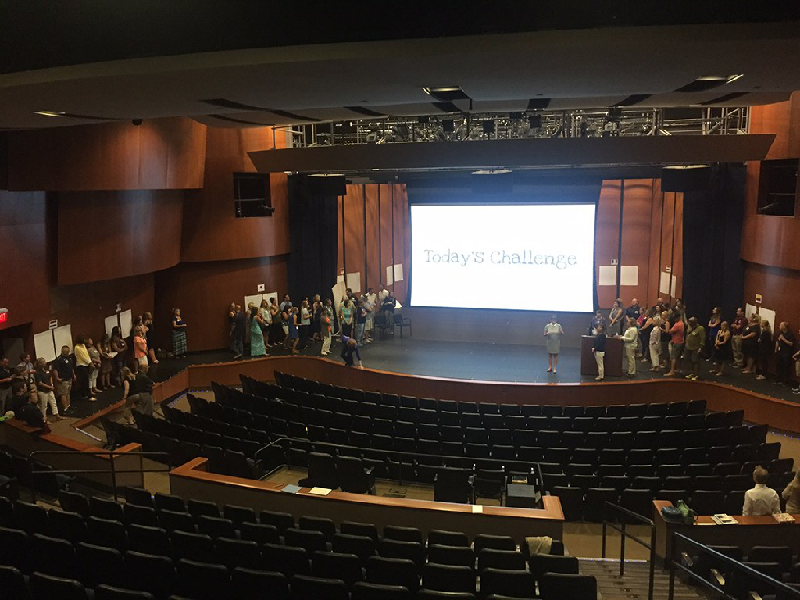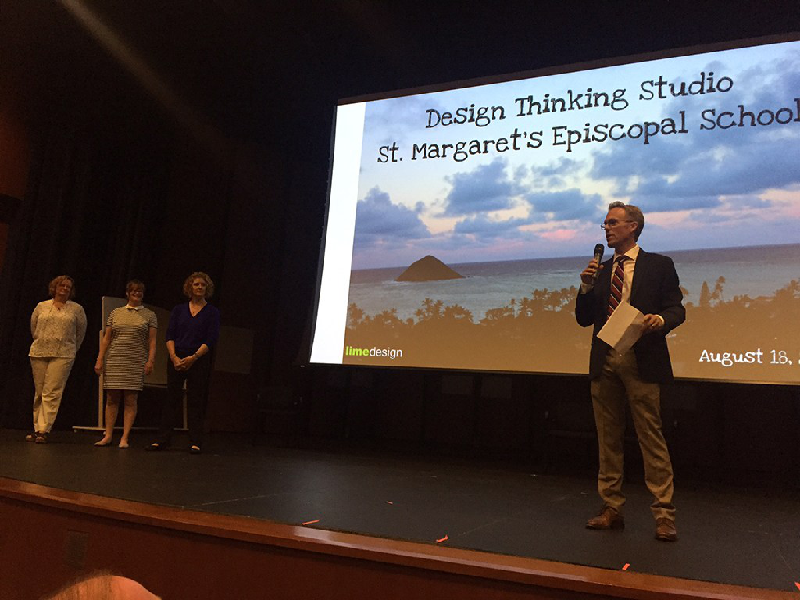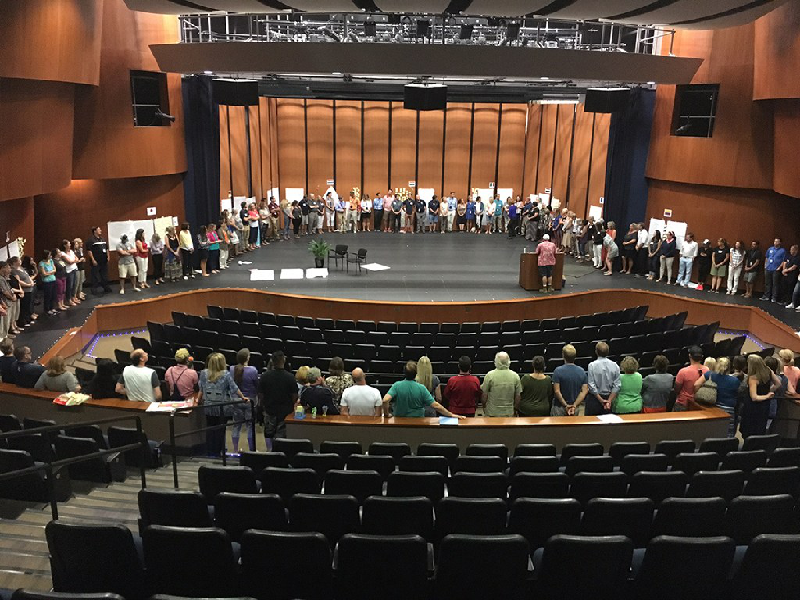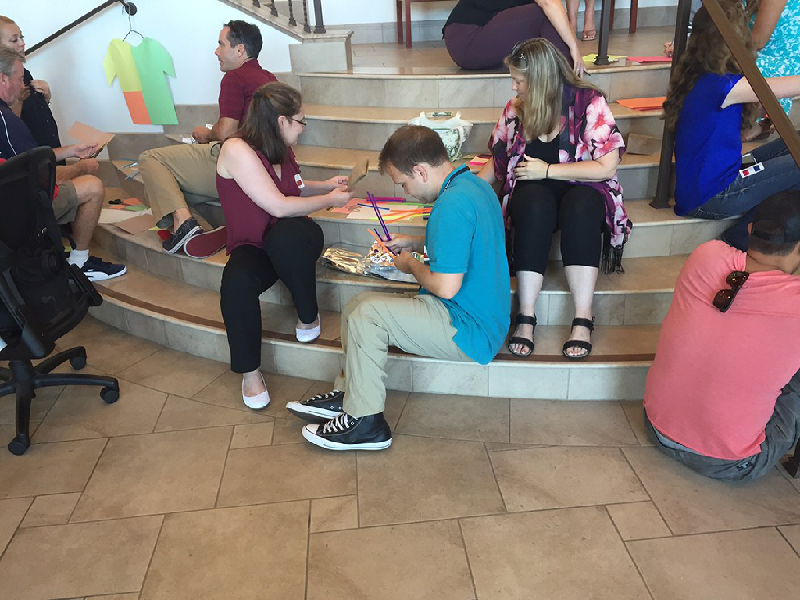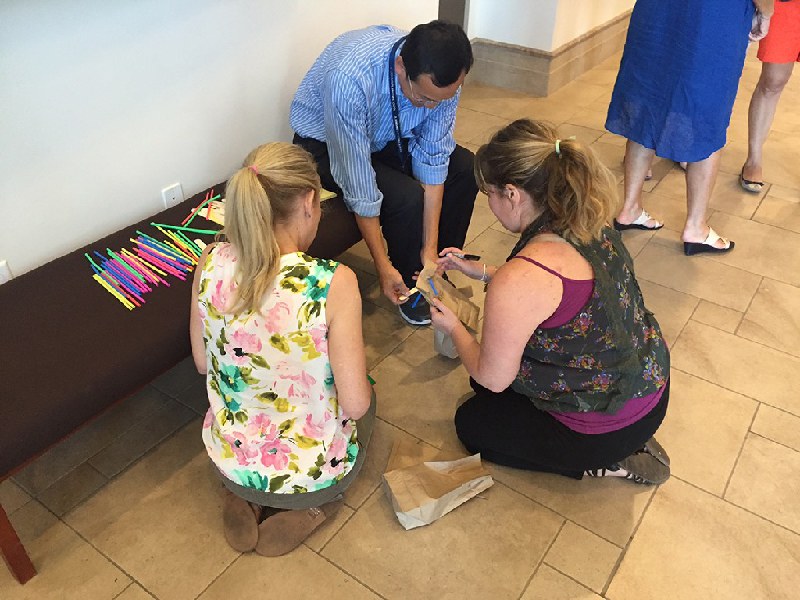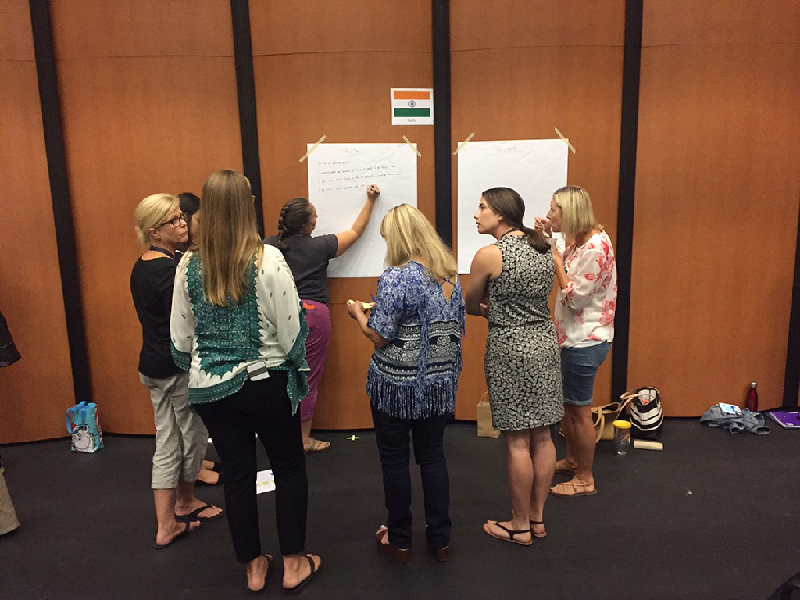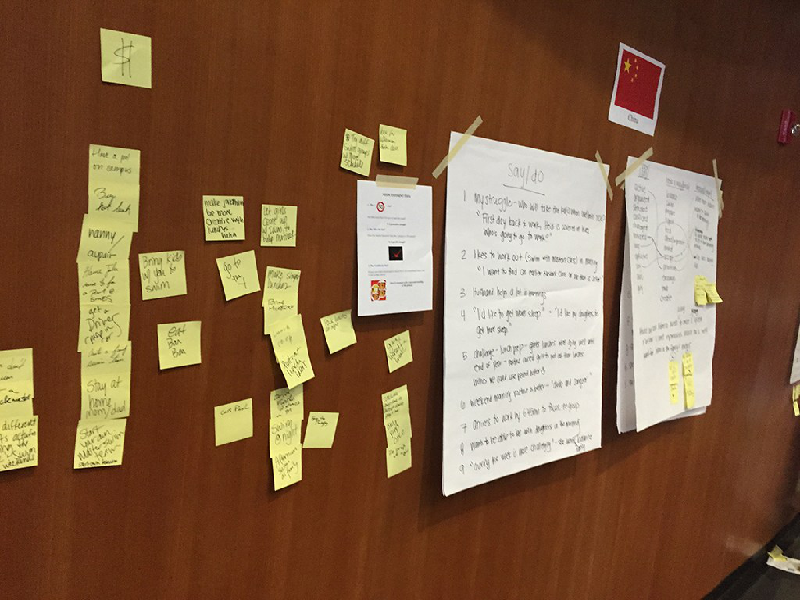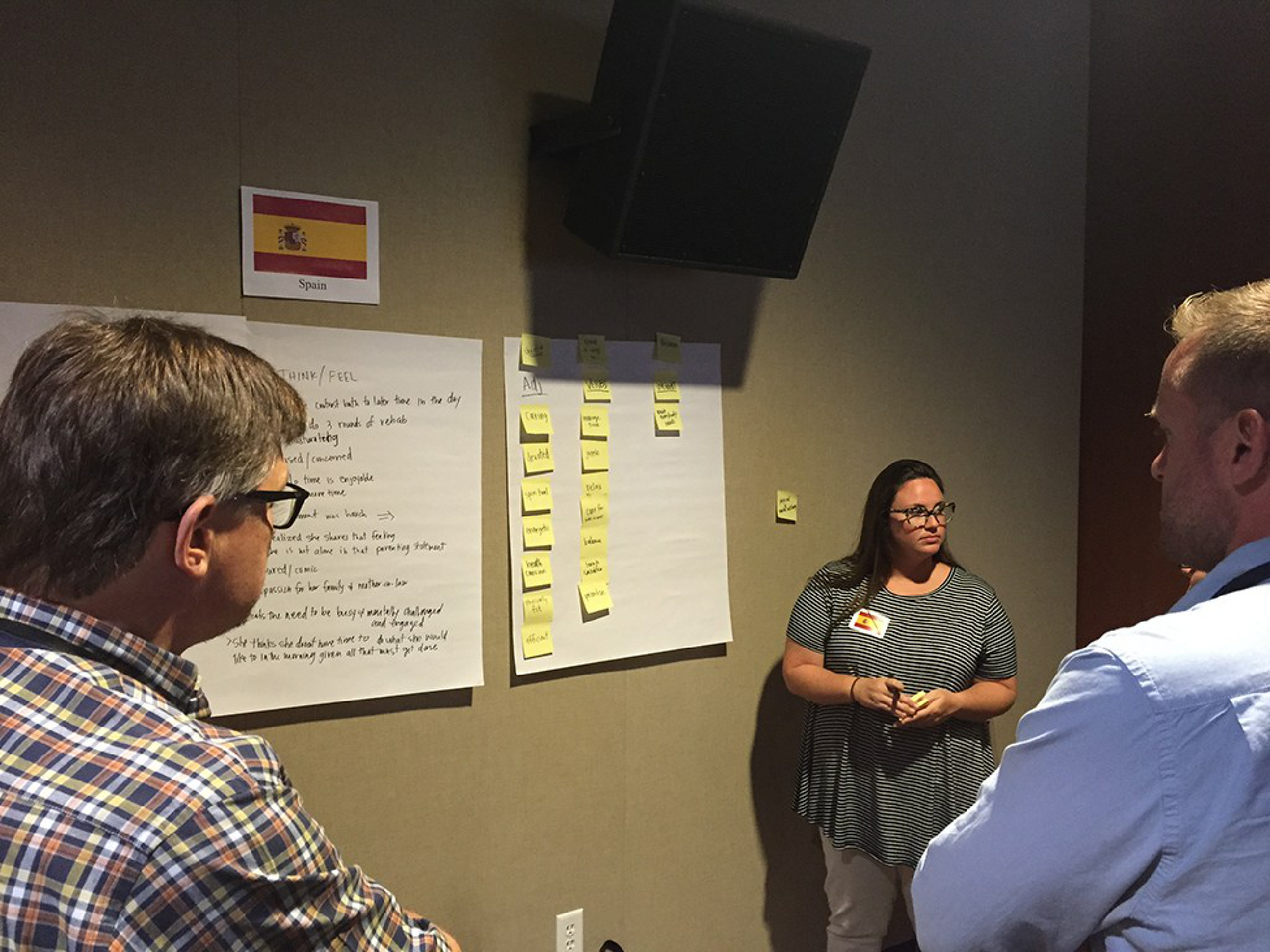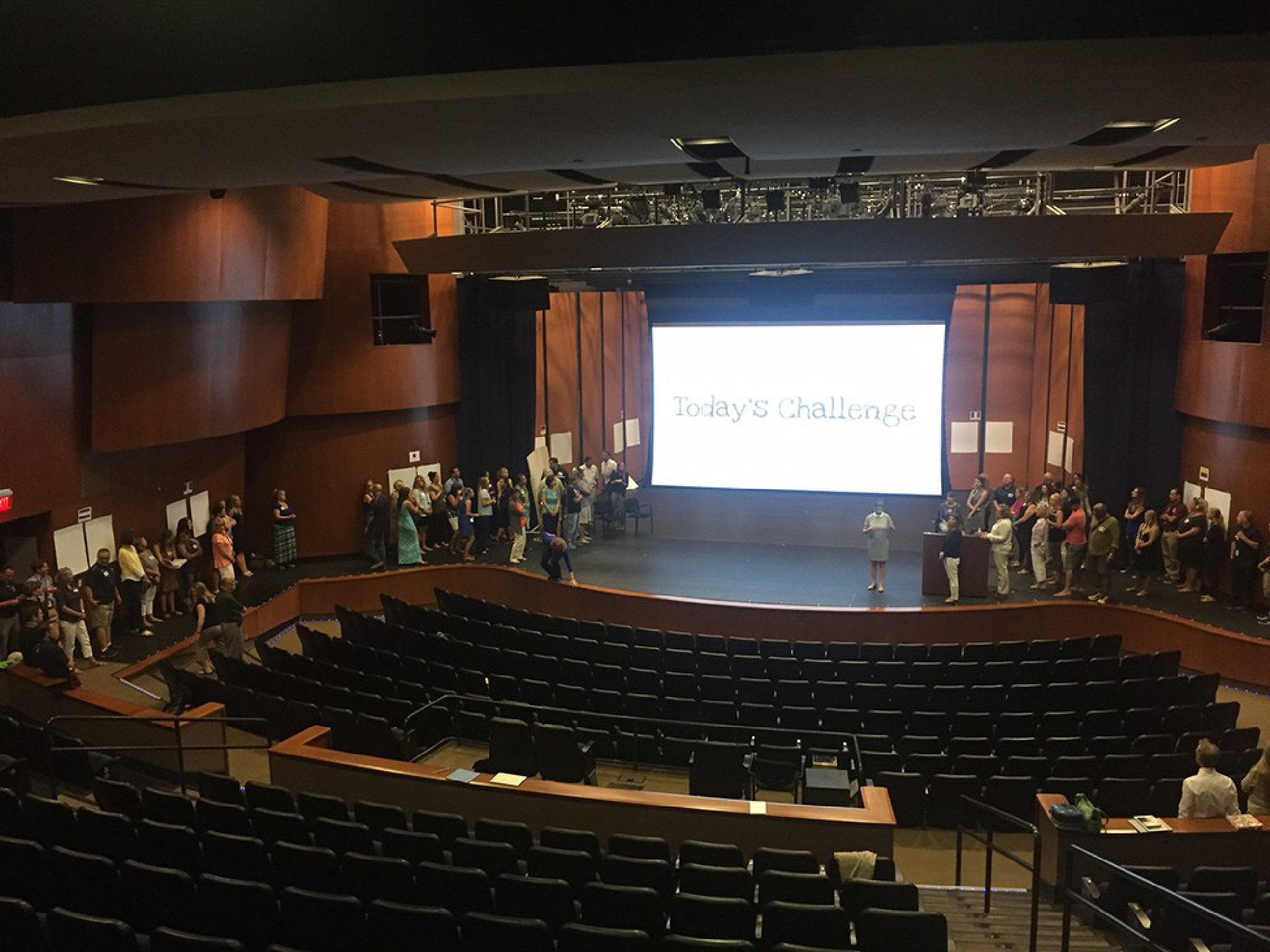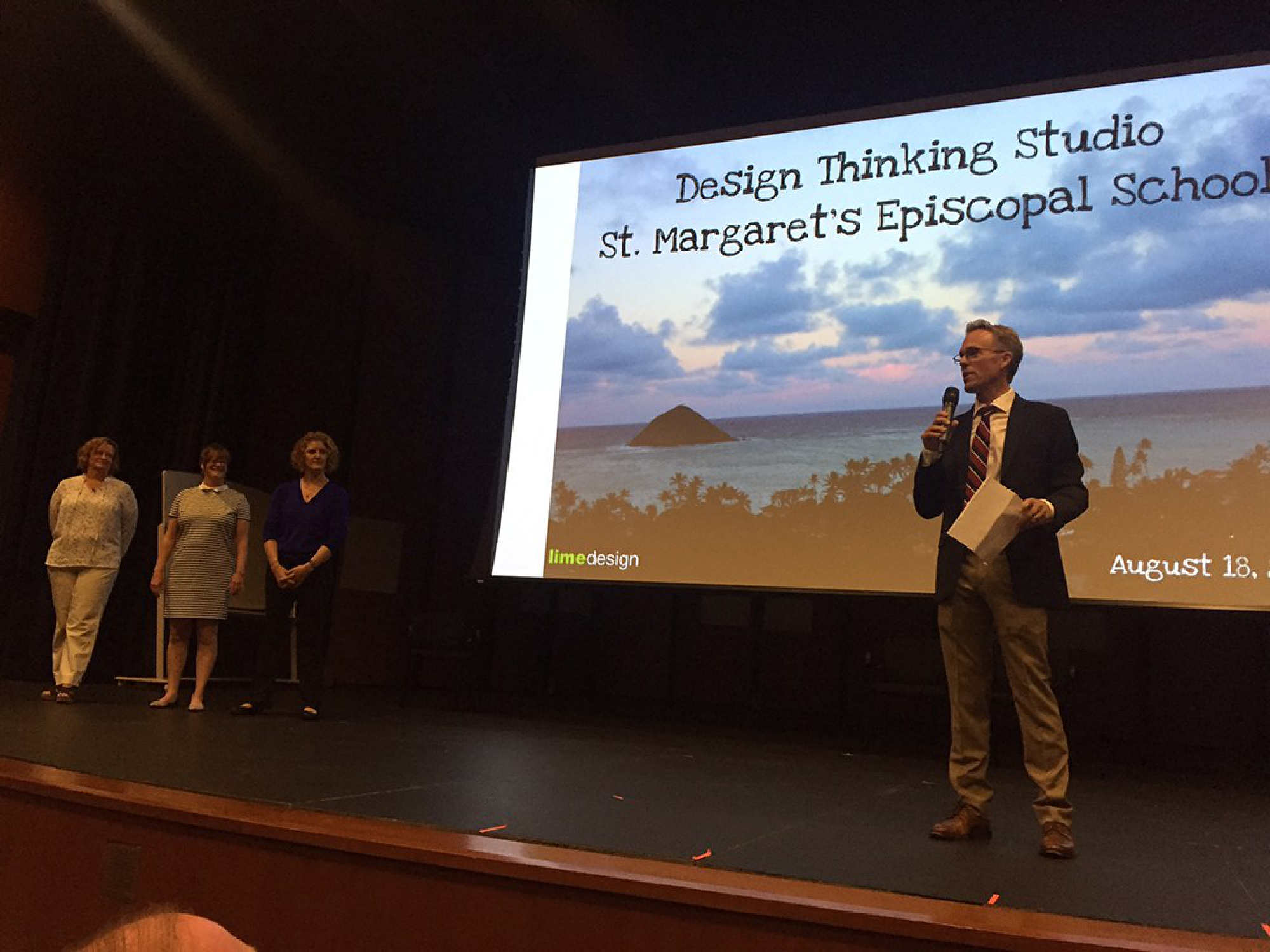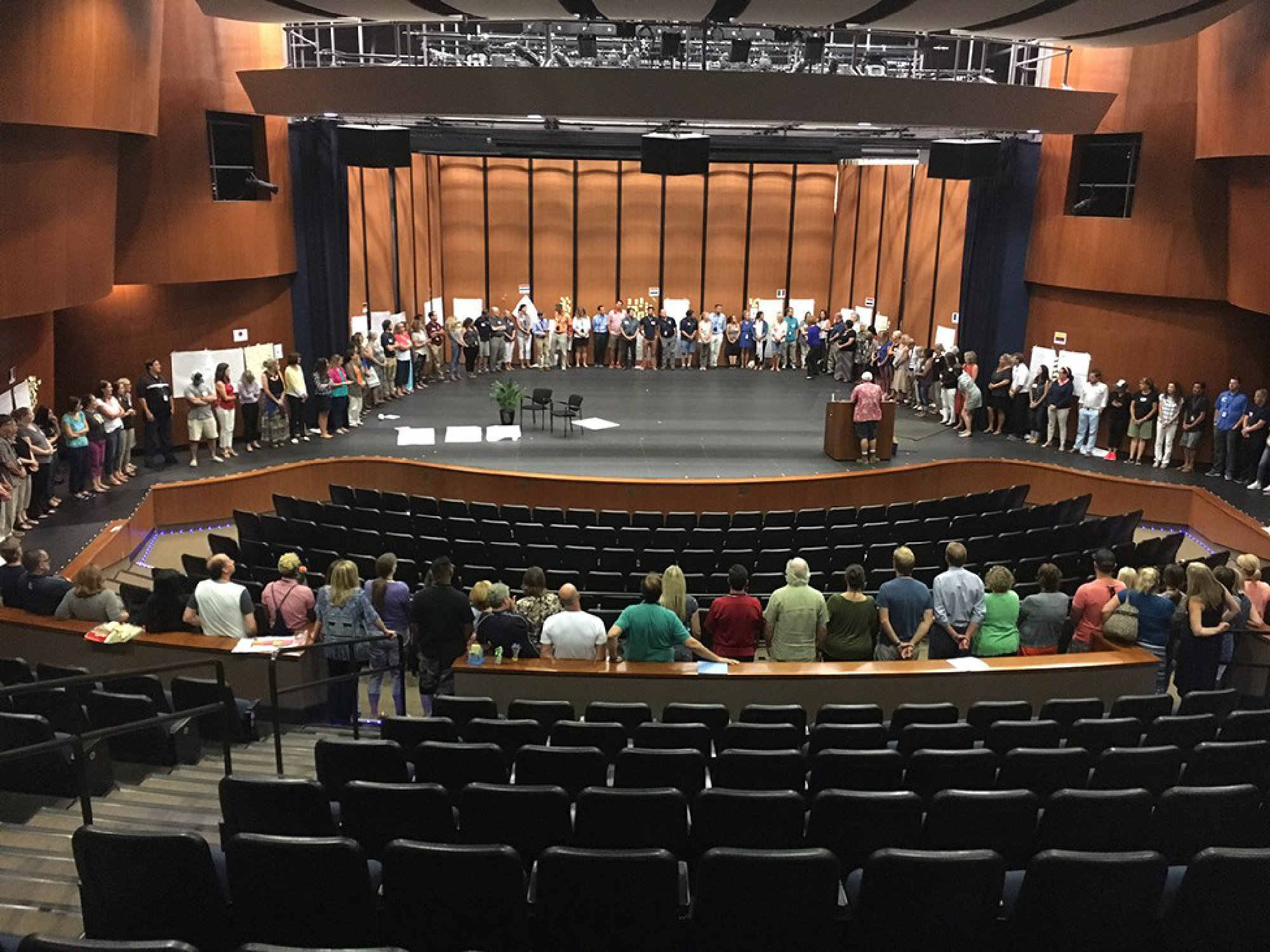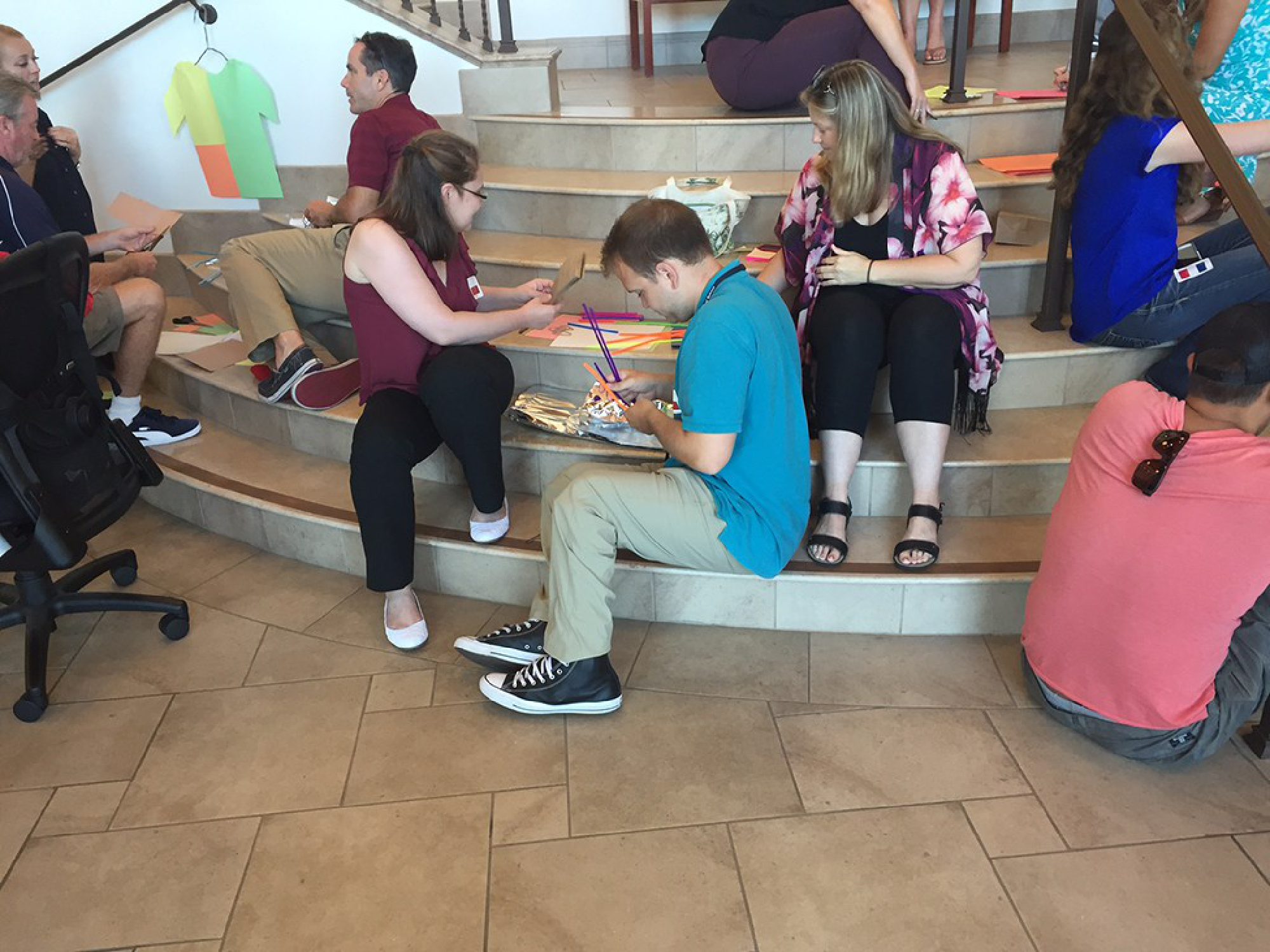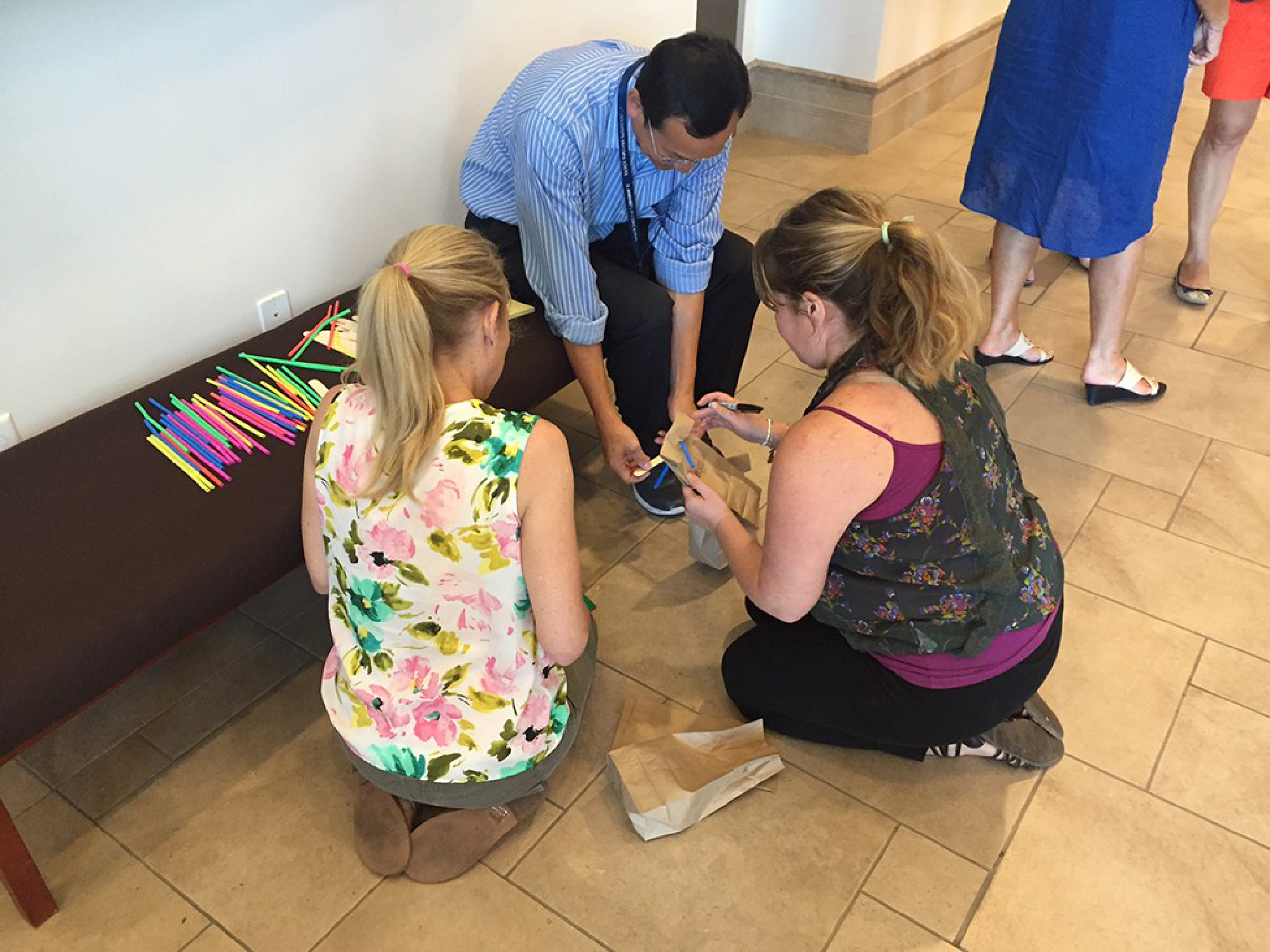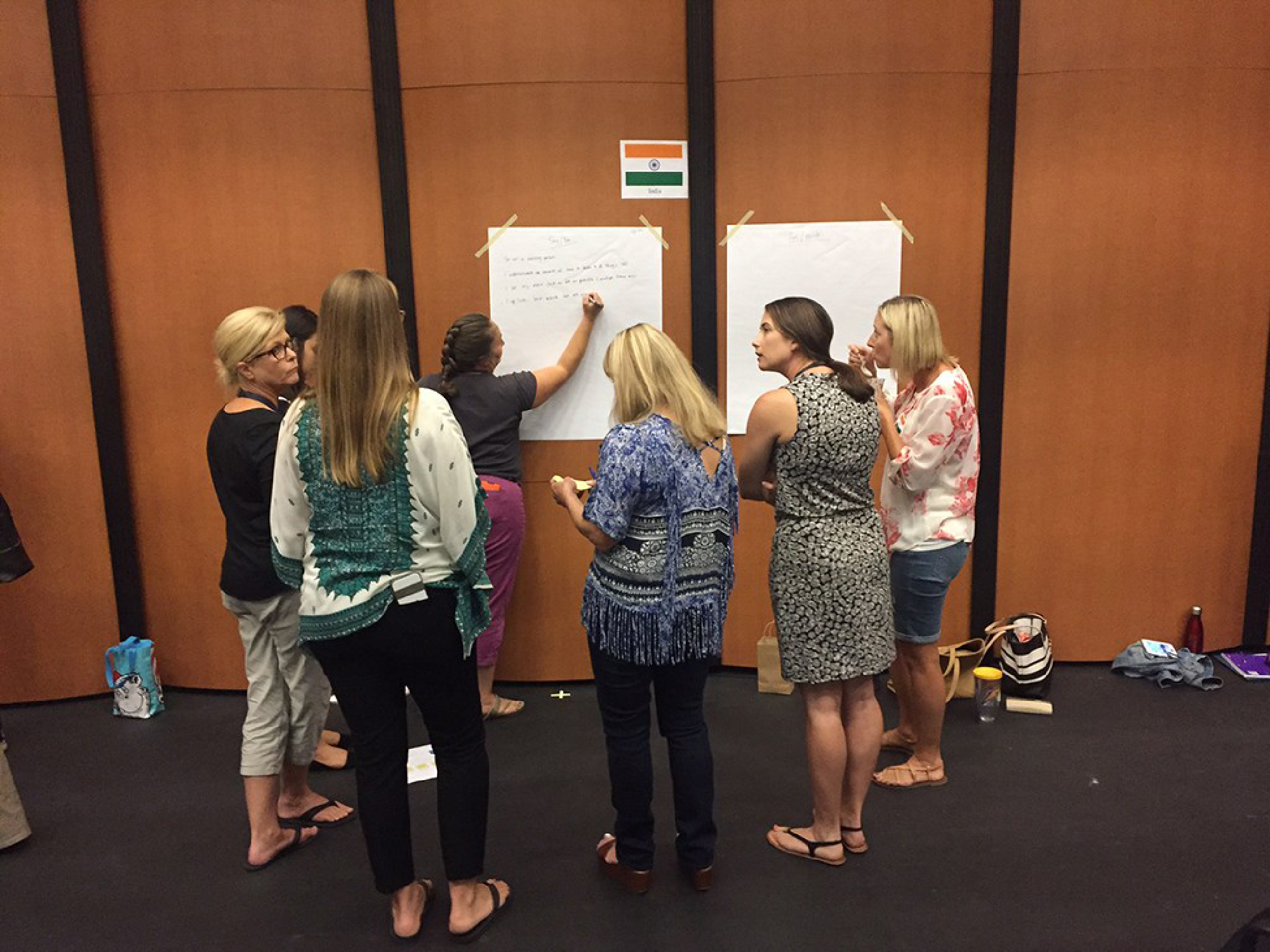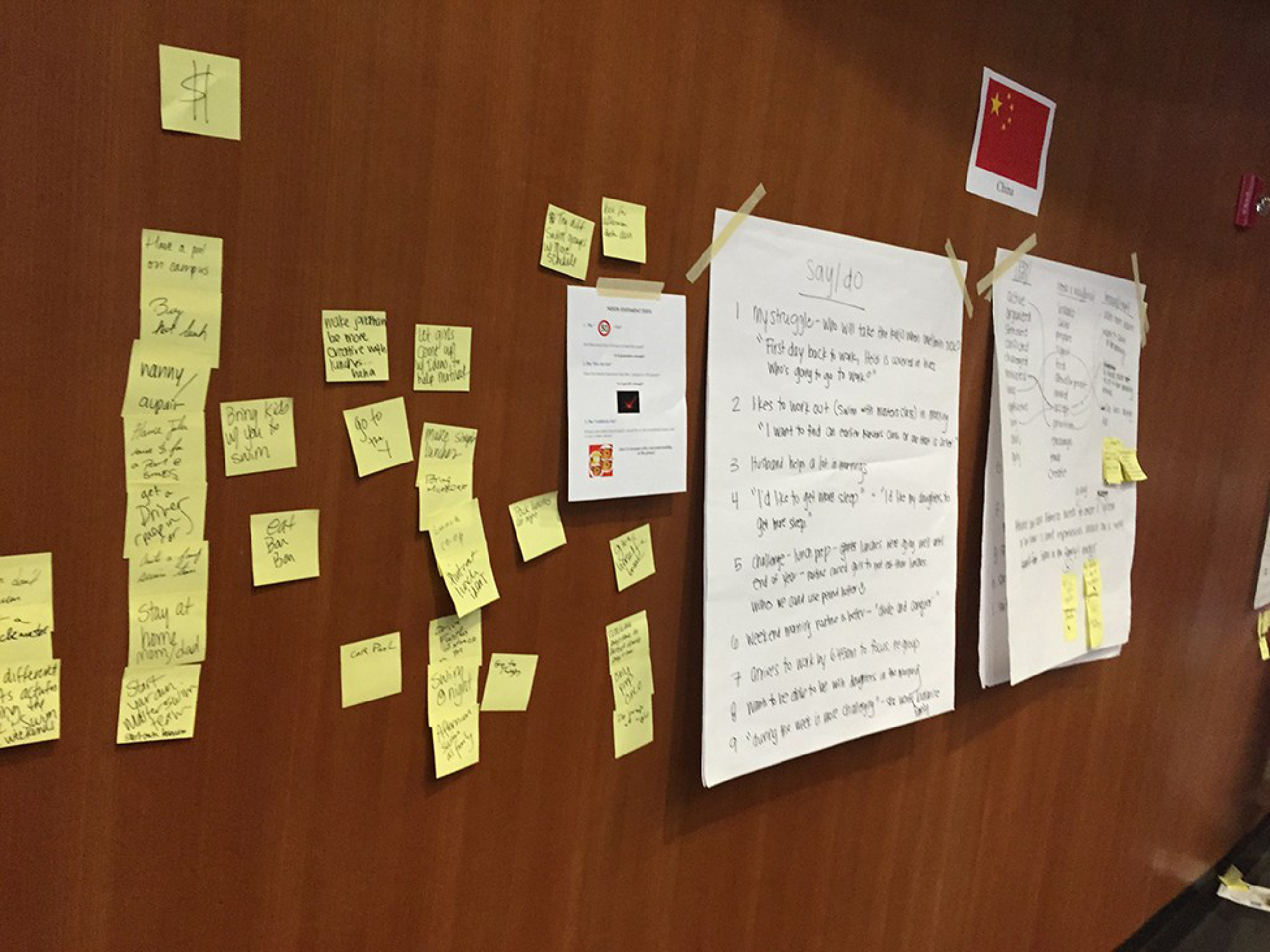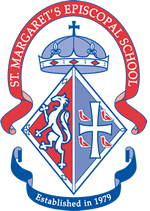By Victor Cota, Director of Equity and Inclusion
My grandparents met each other while working in the farm fields of San Juan Capistrano. My grandfather attended Mission SJC for grade school. My grandmother, speaking limited English and working multiple jobs to make ends meet, raised four children effectively as a single mother. Three generations later, my children—and their great-grandchildren—attend the premier educational institution in Orange County.
We all have a story. Every member of the St. Margaret’s community, including and especially you, has a story. When we weave these stories together, we create a beautiful fabric that honors those who came before us, celebrates those with whom we share community, and prepares future generations to thrive in a multicultural world.
St. Margaret’s also has a story. When we, as an institution, look in the mirror, we can do two things at the same time: celebrate the journey that has brought us to today, and be honest with ourselves about the places where we can still grow. In the wake of celebrating our school’s 40th anniversary, we look back and fondly remember the stories, traditions and people who shaped our school’s path. Just as we do with ourselves and our own stories, we look back and smile at all that has led us to today, and we get excited about how we can use that history as a foundation for our future.
And, if we are being fully honest with ourselves, we also acknowledge the harder truths about St. Margaret’s: the “white flight” narrative of independent schools in the United States, the cultural realities of who, historically, has versus has not felt a sense of belonging at St. Margaret’s, and the painful stories of alumni, students, and professional community members from underrepresented identities and how those people might still be healing. Just as we do with ourselves and our own stories, we look back at these harder truths, reflect upon their impact, and commit unapologetically to doing better.
Last fall 2019, our Board of Trustees approved the adoption of a fifth core value: Equity and Inclusion. At successful institutions, mission-aligned core values set the foundation for strategy and shape daily culture.
Equity and Inclusion joins our other four core values—Character, Community, Balance and Breadth, and High Expectations—to act as a guidepost for the future of our school. By Equity and Inclusion, we mean an institutional commitment to the just and fair treatment and equal access to opportunity for every person, embracing their unique identities so that they can thrive in our community and in the world beyond St. Margaret’s.
Head of School Will Moseley said, “St. Margaret’s Core Values coupled with our Episcopal identity comprise the foundational touchstone that guide all Tartans at St. Margaret’s and everywhere we venture into the world. As we have deepened our commitment to diversity, equity and inclusion work over the past decade, as well as our own cultural competency, we recognized that something as central to who we are—equity, inclusion, justice and our recent proclamation to becoming an increasingly antiracist institution—could not be implied, rather must be explicitly articulated. I have shared many times, that this is the most impactful work we will do as a school community and with our young people, and cementing it into the bedrock of our institution as a Core Value was vitally important.”
“For me personally, I have learned the value of equity and inclusion from my time here and St. Margaret’s and from my experience with TIDE. Equity and Inclusion are crucial to the success of a school and helps the school function and helps for all members of the school to feel accepted and brings the community together.” — Josh
What do we mean by Inclusion? By inclusion, we mean our ability to honor and respect the dignity of every human being. Inclusion means that when you and I walk onto campus, we can bring our full selves each and every day. Our backgrounds, life experiences, thoughts, countries of origin, cultures, faiths, languages, foods, music and social identifiers belong here. Fully and without exception. When we engage in inclusion work, we ask ourselves, “Is every member of our community able to co-create the culture of our school? Whose voices and experiences are included? Whose are not?”
What do we mean by Equity? Whenever and wherever we find that certain voices and experiences are less represented than others, that is when equity work kicks in. Here is an important and potentially uncomfortable truth for us all to understand: ours is a world of imbalanced access to opportunities and resources. As a result, people in the same community will have very different experiences. When we engage in equity work, we ask ourselves, “Who is favored? Who is not? Who has privilege in this situation? Who does not?” Then, as we become more comfortable and informed in this dialogue, we immediately ask, “What will we do about it?” Sometimes this means reflecting on individual behaviors and sometimes it means examining entire systems. What matters is that we ask the questions, move through any subsequent discomfort, and then act.
“In my experience, equity has been much more meaningful and impactful than equality because it focuses on the real needs of different communities rather than the perceived needs. Justice is not about making everything equal and the same—individuals and communities are beautifully unique with unique needs.” — Angela
“Equity and inclusion, in its ideal form, means everyone, no matter their socio-economic or ethnic background, is given an opportunity to succeed along with a sense of belonging and importance. It is integral St. Margaret's prioritizes equity and inclusion because this school must optimize the potential of young students and provide them with an environment in which they can thrive and positively motivate, inspire, and positively change their respective communities.” —Shea
I believe that we have a moral imperative to graduate culturally competent leaders from St. Margaret’s. It is no secret that Tartan alumni go on to serve as leaders and influencers in the world. We would expect nothing less from our school; in fact, I have this same expectation for my own two children. The key, from the perspective of Equity and Inclusion, is that these future leaders go on to behave in a manner that fights against inequity and promotes justice in the world. For that reason, we continue to engage in purposeful efforts to develop cultural competency in our professional community and students, and we are doing so from Early Childhood through Grade 12. Efforts have included:
Early Childhood: Reggio Emilia as experiential education in action, with a specific focus on identity formation. Equity and Inclusion connection: Cultural competency for students begins with developing a sense of self, so that they understand who they are and how they exist in the world.
Lower School: Rethinking San Juan Capistrano Day to honor the many identities represented in this historical narrative—Native American, Mexican, Chinese, and pioneer. Equity and Inclusion connection: Sometimes equity work requires us to examine current practices and build upon them, especially when we consider demographic trends and cultural needs.
Middle School and Upper School: Cultural competency workshops in advance of service learning experiences, so that students can practice concrete skills such as meeting real needs instead of perceived needs, systems-level thinking about poverty in Orange County, and engaging with community members from different socioeconomic backgrounds. Equity and Inclusion connection: As students get older, they should start to grapple with systems level thinking in their communities, i.e. Why does poverty exist in Orange County? What factors contribute to the need for service organizations to exist? This level of thinking will carry with them as they move beyond St. Margaret’s and into adulthood.
Admission: Screening for a growth mindset with regard to Equity and Inclusion, including a cultural competency question on the Parent/Guardian statement. More broadly, working to broaden our understanding of diversity in Orange County and in the local community. Equity and Inclusion connection: We have put a stake in the ground. We expect that students and families who want to attend St. Margaret’s will be active contributors to an inclusive and equitable school community.
Hiring: Broadening our understanding of hiring to span from recruitment, through interviewing, and into onboarding, so that new professional community members from diverse backgrounds can see themselves working at St. Margaret’s for the long-term future. Equity and Inclusion connection: We understand that our professional community, especially our teaching faculty, is not fully representative of our student population. It is better for us to embrace this truth, so that we can act on it consciously, strategically, and urgently.
“Personally, I think that equity and inclusion are vital in building trust in others and learning more about aspects of others’ lives that may feel foreign to me. Focusing on equity and inclusion at SMES means creating an environment where students can feel safe when it comes to expressing their identities. Most importantly, students should not feel as if they are being discriminated against for aspects of their identities that they can’t control, and instead should feel proud to express everything that makes them unique.” — Sarah
For more on current school efforts, watch our June 25 webinar “The Journey of DEI Work at St. Margaret’s” by
clicking here, or view the PDF by
clicking here. Hear from Head of School Will Moseley, President of the Alumni Council Mattingly Messina, Chaplain Mother KC Robertson, and me, on topics that include:
- The DEI journey of St. Margaret’s over the years
- The Episcopal identity connection
- Admission data and efforts
- Hiring diversity efforts
- Service learning and cultural competency
- The Equity Team
- Early School through Grade 12 cultural competency framework
- Culturally responsive teaching
- Affinity groups
- Language justice
- Ongoing professional development
- Tartans for Inclusion and Diversity Education (TIDE)
- More on immediate next steps
The spring and summer of 2020 have reminded us that Equity and Inclusion needs persist. Educating children in a COVID-19 environment means thinking and planning for an experience that considers the academic, social, and emotional needs of all community members. Educating children in an election year that promises to be polarizing means designing a school environment that is inclusive of the voices of all community members and actively combats against contempt, xenophobia, sexism, and more. And, educating children in an environment where social justice is at the forefront of a national conversation on racism means explicitly designing for a school that acts as increasingly antiracist.
That is our story. That is our journey. We are committed to it, and we are excited to be on it.
“Equity and Inclusion play to the fundamental goodness of humanity: being tolerant of others, accepting and supporting their differences, and keeping everyone in mind. It is with Equity and Inclusion that we can peacefully coexist, and prosper while doing so. Because St. Margaret's prioritizes Equity and Inclusion as a core value, not only does St. Margaret's uplift its own community--including people who stand out, like me--but St. Margaret's automatically contributes to the worldwide journey towards increasing tolerance and encouraged diversity.” -- Kaelyn



